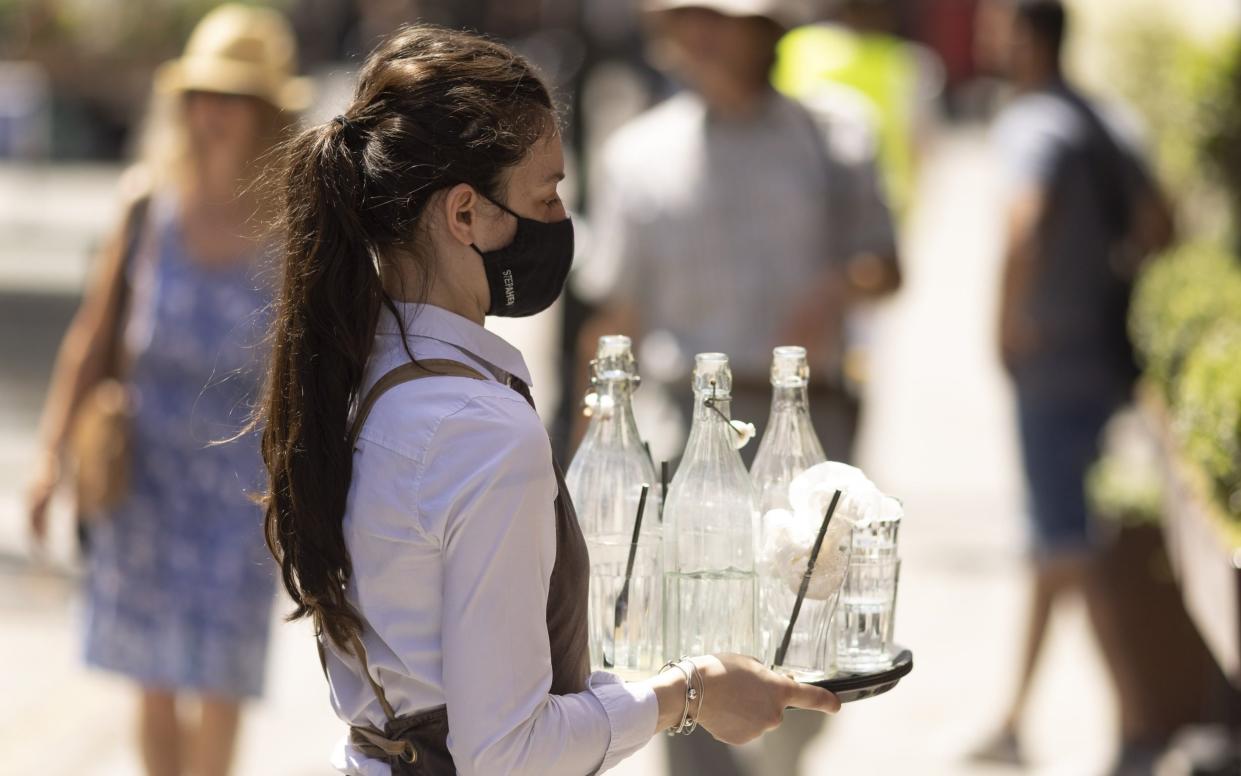Vacancies surge above pre-Covid levels as staff shortages bite

Job vacancies have soared back to pre-pandemic heights as employers scramble to find staff, official figures show.
Monthly data published by the Office for National Statistics (ONS) showed 881,000 vacancies in May - more than double than just 327,000 a year ago when the Covid outbreak was at its peak and the most since October 2018.
The pressure on desperate pubs and restaurants owners to find staff was most acute, underlined by a 260pc rise in vacancies over the quarter to May.
During May alone, pubs, restaurants and hotels were on the hunt for 110,000 staff - the highest on record - ahead of reopening on May 17.
The ONS said there was “some evidence to suggest that vacancies have been created by workers not returning to their previous jobs as this sector reopened”.
Shortages have been exacerbated by the departure of EU workers during the pandemic as well as a lack of casual student workers.
The buoyant signs came a day after Boris Johnson controversially decided to delay the final stage of the pandemic roadmap by four weeks amid concern over the rise of the new Indian variant.
Matthew Percival, skills director at the Confederation of British Industry, said: “Recruiting in a post-pandemic economy is becoming increasingly difficult, particularly in sectors like hospitality and food manufacturing, and for jobs like HGV drivers and workers with digital skills."
Employers added a record 197,000 staff to payrolls in May, double the pace of the previous month and a sixth successive rise ahead of the reopening of indoor hospitality. However, the figure remains 553,000 below pre-Covid levels.
Unemployment, which has been artificially suppressed by the Government's furlough scheme, fell to 4.7pc in the quarter to April, defying fears of a double-digit jobless rate at the onset of the pandemic. George Buckley, chief European economist at Nomura, said the UK's jobs recovery was "well under way".
But experts also highlighted the potential impact of the end of the furlough scheme in September, which was still supporting 1.8m workers at the end of May, according to ONS estimates.
The Bank of England forecasts that unemployment will rise to 5.4pc by the autumn and the Resolution Foundation thinktank warned that the UK still had a ‘‘Covid employment gap" of 2.8m workers either fully or partially furloughed, or out of work completely.
Nye Cominetti, an economist at the Resolution Foundation, said: “With emergency support starting to be phased out over the next few weeks, and ended completely by October, this gap will need to be closed a lot more to prevent a worrying rise in unemployment later this year.”
The number of hours a week worked across the wider economy stood at 975.2m in the quarter to April, still more than 7pc below the three-month period before the pandemic struck.
Wage growth jumped to 5.6pc year on year - the highest since 2007 - but this was driven by more employees returning to work, in contrast with a year earlier when more than a quarter of the workforce was placed in the jobs retention scheme. The pandemic's disproportionate impact on lower-paid jobs has also pushed up average wages.
Younger workers are still suffering however, with 126,000 fewer under-25s on company payrolls over the year to May.
The Chancellor said: "We are creating new routes into work through apprenticeships, Kickstart placements for young people as well as targeted support for the long term unemployed."

